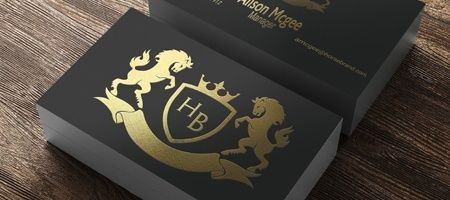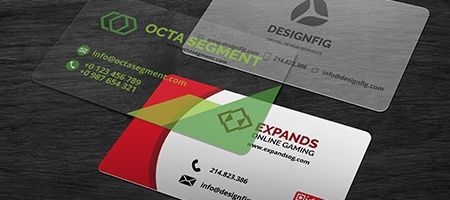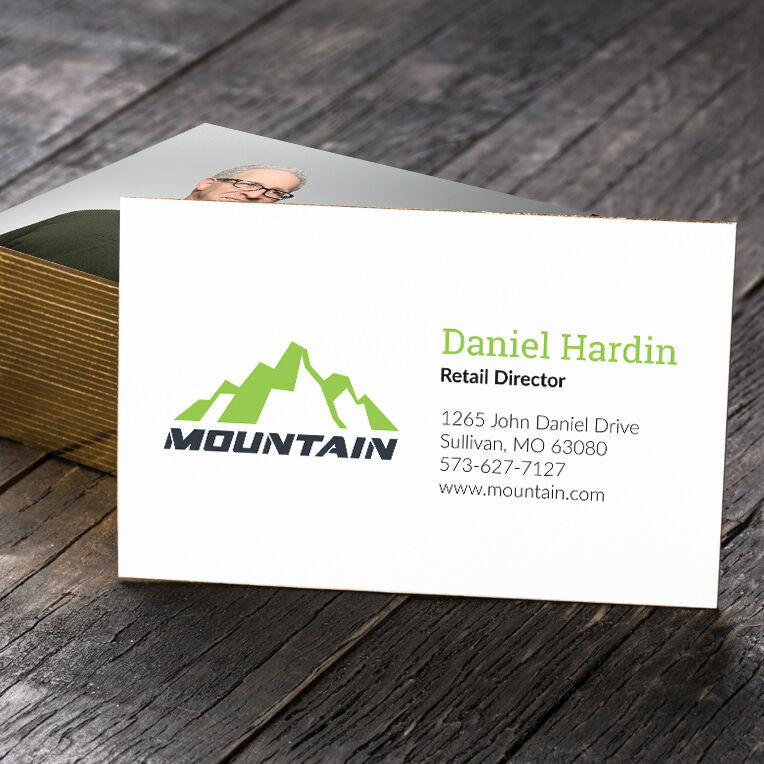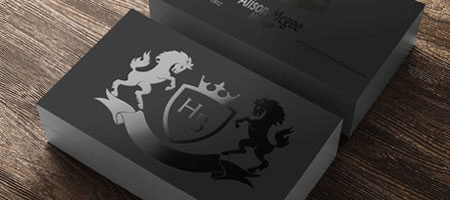The Complete Guide to Organizing Important Business Card Information
Written By: Leslie Taylor | Article Date: July 27, 2022
Business cards seem irrelevant in today’s fast-paced digital era. But after a year in lockdown and several quarantines, people have been craving face-to-face interaction. Your business card plays a vital role in these conversations. According to Rebecca Saxe, the senior author of an MIT study, “People forced to be isolated crave social interactions similarly to the way a hungry person craves food.”
Small and medium business owners can maximize the face-to-face interactions attendees crave at events like weekend markets, conferences, and trade shows. Your business card helps increase the likelihood a customer or client will get in touch after you’ve met at these much-craved social events.
Print has a unique advantage over other digital marketing tools. When customers read your business cards, there’s no other Instagram story or pop-up ad competing for their attention. There’s also space on the card to showcase what your business offers and make a lasting impression. The recipient is also more likely to remember you when you introduce yourself with a card. They also see that your business takes the time, effort, and resources to present the company in its best light.
Find out how you can create a business card unique to your brand and what it has to offer.
The Most Important Details on Your Business Card
Your logo should be front and center on the business card. Once the customer sees the logo, they can immediately create an association with your company.
Company Name and Tagline
Place your company name and tagline near the logo. Grouping these elements increases recall of your business.
Your Name and Job Title
Establish who you are and what you can do for that potential client or customer. Your name should be easy to read, as well as your role printed below it.
Website Address
Highlight the company’s website address on one side of the business card. Potential customers can visit the site if they want to know more about your company.
Contact Details
If you made a strong impression, then that client might want to contact you immediately. Ensure that your email and phone number are prominently displayed on the card.
Social Media Accounts
Websites aren’t the only way to showcase your business online. You can also list the name of your Instagram or Facebook accounts. After following your account, they’re more likely to interact with the brand once they see your posts on their social media feed.
QR Code
Print a QR code that leads to your website or a social media account. When you use a QR code, your client won’t have to type your address or username on their phone.
How to Layout Your Business Cards
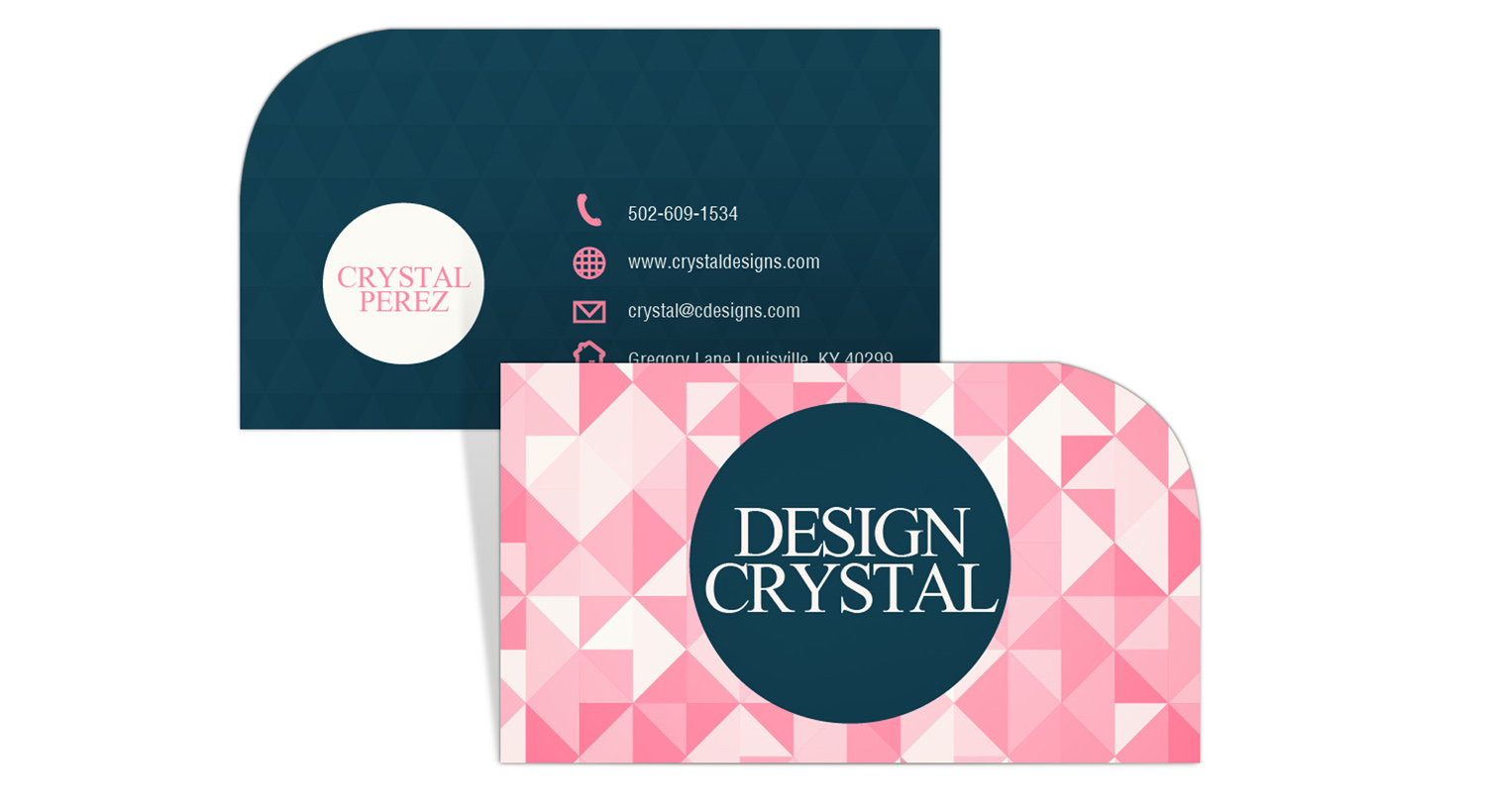
Front of the Business Card
- Logo
- Company Name
- Optional: Tagline

Back of the Business Card
- Name
- Job Title or Position
- Contact Details
- Website
- Social Media Accounts
Find the Best Printing Style and Features for Your Business Card Design
Does your business cater to high-end customers or clients with higher purchasing power? Appeal to this top-tier market with the luxurious shine of copper, gold, or silver on your logo or company name (or both). The metallic finish stands out on a lush silk laminate that helps customers feel the sophistication your company has to offer.
Want to use a material that looks and feels completely different from the standard cardstock seen on most business cards? Plastic business cards are thicker, waterproof, and tearproof, made with a sturdy material that’s just as durable as a credit card. You can choose from clear, white, or frosted plastic backgrounds to match your design.
Your card literally stands out from the side with its colorful painted edges. This business card is twice as thick as the standard cardstock and less likely to tear. Color the edges in pink, purple, red, turquoise, black, brown, orange, or blue. Metallic hues are also available in gold, green, hot pink, orange, purple, yellow, and blue.
Give your logo, company name, and tagline that extra shine with a spot UV finish. Spot UV business cards highlight central elements in your card with a glossy sheen that’s extra reflective under the light. You can also elevate the text or image a little above the surface with a raised spot UV finish. Apart from shine, the spot UV or raised spot UV adds a more tactile experience.
Printing Guidelines
Online printers make it easy and convenient to create a business card design. You can choose from a variety of card tyles and features before customizing the look on your device. Once you’ve completed a design and selected the best type for your business card, you’ll have to upload the file online. The printer takes care of reviewing the file and ensuring the best appearance upon production. Simply choose, design, and order before waiting for the delivery to arrive at your doorstep.
During the design process, refer to these guidelines to ensure each card comes out in the highest quality:
- Images and artwork should be at least 300 dpi. Anything lower than 300 dpi and the images or graphics will come out pixelated.
- Set the document color profile to CMYK. Offset printing uses the CMYK color mode to match the hues on your design to the final print. The colors in your design will look different if the file is prepared under RGB mode.
- Review the file format. Save your file in any of the following formats: PDF, AI, JPEG, PSD, PUB, or TIFF.
Business cards have stood the test of time and continue to professionally represent all kinds of companies. The immersive experience they offer can never be replaced by a digital version anyone can choose to ignore. Start planning your design for a business card that your potential customer or client will want to keep.


